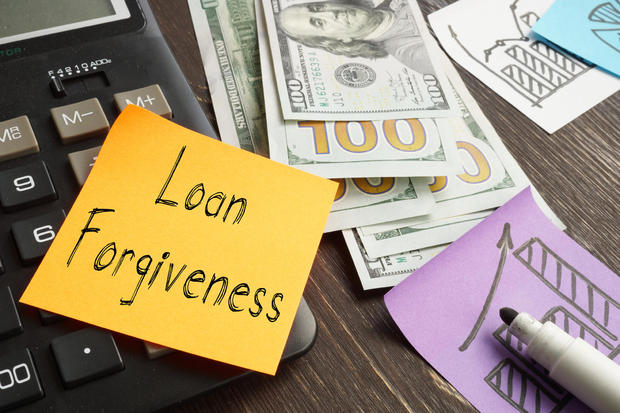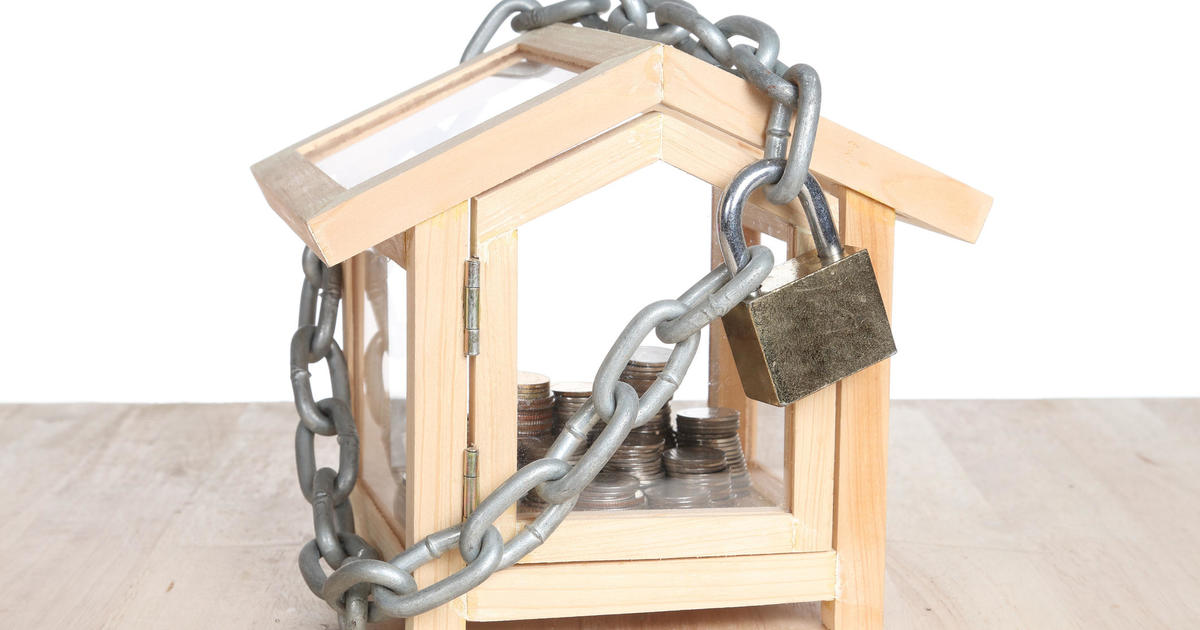Biden's student loan forgiveness application form is here: How to apply now
Student loan forgiveness applications are officially open after the U.S. Department of Education ran a weekend-long beta test to ensure a smooth process before launch.
"It's easy, simple and fast -- and it's a new day for millions of Americans all across our nation," said President Biden on Monday as he announced that the student loan forgiveness application is now available.
President Biden announced in August that he's canceling up to $20,000 in student loan debt for millions of Americans. In fact, nearly 20 million people will be eligible to have their debt fully canceled under the new plan. He also extended the federal student loan payment pause through December 31, 2022 (payments resume in January).
However, the loan forgiveness element does not apply to private student loan borrowers who account for an estimated 8% of total outstanding student loan debt in the U.S., according to a 2021 report from MeasureOne. If you fall within this category, then you may want to consider exploring some other ways to save money such as a student loan refinance. See what private lenders have to offer.
- Who qualifies for student loan forgiveness?
- What to do if you don't qualify for student loan forgiveness?
For those who are federal student loan borrowers, here's how you can apply for debt relief.
Who can apply for Biden's student loan forgiveness plan?
Before you even worry about applying for student loan forgiveness under the Biden administration's new plan, you'll need to make sure you actually qualify. Here are the criteria you need to meet.
- You're a current federal student loan holder
- You earn less than $125,000 a year or your household earns less than $250,000 a year
- You're a Pell Grant recipient with loans held by the Department of Education (this is required for additional forgiveness)
If none of the above applies to you or you have a private student loan, then make sure to review what private loan lenders have to offer. A student loan refinance, which essentially means replacing your existing loan with another loan with a potentially more favorable interest rate, is a good option if you're looking to save money long-term. Here's how you can get started.
How to submit Biden's student loan forgiveness application
If you check the above boxes, then you are likely eligible for student loan forgiveness under this new plan. Just note that your relief will be capped at the amount outstanding (so you won't get to pocket any extra money if you have less than $10,000 in federal student debt).
Now that you know you meet the qualifications, you can submit an application through the Department of Education, which will outline the exact steps you need to take. You will likely need to demonstrate that you meet the above income threshold and have federal student loan debt, so make sure to gather the appropriate documents and have them when applying.
Qualifying borrowers are being advised to apply prior to November 15, 2022 "in order to receive relief before the payment pause expires on December 31, 2022." But, you'll have plenty of time. The deadline to apply is December 31, 2023.
The White House said in a statement that 8 million borrowers may be able to automatically get relief because their financial records and income data are already available to the Department of Education.
"Thanks to the American Rescue Plan, this debt relief will not be treated as taxable income for federal income tax purposes," the White House added.
Student loan forgiveness FAQs
Following Mr. Biden's student loan forgiveness announcement, searches on Google spiked — and the Federal Student Aid received an overwhelming volume of traffic that caused some site delays. So, here are some frequently asked questions related to the news.
- What is a Pell Grant?
- Will the student loan payment pause be extended again?
- Are there any other student loan forgiveness programs?
What is a Pell Grant?
While researching the Biden administration's student loan forgiveness plan, you'll come across the term "Pell Grant" a lot. A Pell Grant is a form of financial aid you may be rewarded based on your financial needs, which are determined by the Department of Education during the Free Application for Federal Student Aid (FAFSA) application process.
Your expected income, student status, school-related expenses and more are taken into account. Additionally, your school has to be enrolled in the program. Make sure to contact your school's financial aid office if you'd like more details.
This type of financial aid, which doesn't usually need to be paid back, is reserved for undergraduate students "who display exceptional financial need and have not earned a bachelor's, graduate, or professional degree," according to Federal Student Aid.
The maximum Pell Grant award for the 2022-23 school year was just under $7,000, Federal Student Aid states on its website.
"Since 1980, the total cost of both four-year public and four-year private college has nearly tripled, even after accounting for inflation. Federal support has not kept up: Pell Grants once covered nearly 80 percent of the cost of a four-year public college degree for students from working families, but now only cover a third. That has left many students from low- and middle-income families with no choice but to borrow if they want to get a degree," the White House said as they announced their decision on student loan forgiveness, noting that Department of Education data shows undergraduate student on average leave school with nearly $25,000 in debt.
Will the student loan payment pause be extended again?
As mentioned, the "final" freeze on student loan payments was extended through December 31, 2022.
"While the economy continues to improve, COVID cases remain at an elevated level, and the President has made clear that pandemic-related relief should be phased out responsibly so that people do not suffer unnecessary financial harm," the Department of Education said in a news release.
Are there any other student loan forgiveness programs?
For those interested in student loan forgiveness, you may want to review the other programs available.
- Teacher Loan Forgiveness: Check the American Federation of Teachers' website to get a list of loan forgiveness and other financial assistance opportunities. Generally, you need to be a full-time teacher who has worked five complete and consecutive years in certain low-income schools. You may also receive extra credits with this limited-time waiver available until the end of October.
- Public Service Loan Forgiveness (PSLF): You can qualify for a PSLF loan if you're a full-time employee of a federal, state, local or tribal government or a non-profit organization that has Direct Loans, repay using a certain income-driven repayment plan and you've made 120 qualifying payments.
- Income-Driven Repayment (IDR) Plans: The Department of Education is creating new rules involving income-driven repayment plans, which allow borrowers to set loan payments based on what they can afford (based on nondiscretionary income). After a certain time or number of payments, loans may be forgiven (learn more about the new rules).
- Military Service: There are forgiveness opportunities for active military members and veterans. Military.com lists the different financial aid opportunities and assistance available.
- Volunteer Work: Volunteer organizations such as AmeriCorps and the Peace Corps may have forgiveness offerings.
Federal Student Aid lists more specific criteria and details you need to know to apply to each.





